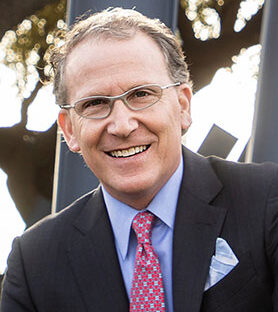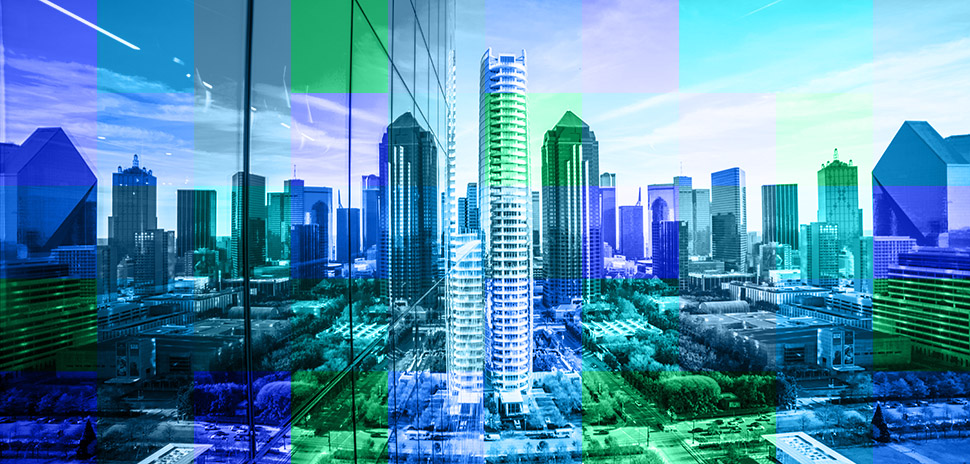In 1936, Dallas hosted the centennial exhibit for the 100th anniversary of the Republic of Texas. In just less than 15 years, Dallas should host the statewide celebration for the bicentennial.
When we do this, the Dallas-Fort Worth area is projected to have a population of 10.2 million. When my father was four years old, he attended the Texas Centennial Exposition at the newly built fairgrounds in Fair Park. At that time, the local population was only 234,000. Thereafter, the population of DFW started doubling every 10 to 20 years.
Simply asked, what will Dallas become? What will be our destiny?
This stunning growth has brought unending opportunities and incredible job opportunities, as well as unanswered questions and unfulfilled gaps. From here, how do we answer the question: How do we grow our economy in the next decade, recruit talent, recruit new companies, incubate new homegrown companies, and simultaneously fulfill our best destiny as a city—for all its current and future citizens? Simply asked, what will Dallas become? What will be our destiny?
Harnessing the paradigm shifts to our advantage
Before answering this question, it is healthy to look outside ourselves for a moment. We are reminded that we are living in a time of accelerated change in technology, which affects every aspect of our personal and business lives, bringing substantial generational differences, changing demographics, a rapidly evolving knowledge economy, and global drivers with which we have close associations and no immunities.

Mike Ablon
It might well be argued that the answer to these questions (What will Dallas become? What will be our destiny?) may largely be found in the confluence of two things: our current status and the state of our given advantages, and how we harness these paradigm shifts to our advantage. So we need to harness our strengths, mitigate our weaknesses, and strategically position ourselves with actions—all carrying strong currency of thought, importance, relevance, and actionable items. But we should always remember that we will prosper to the highest level only if we all benefit and prosper together.
One of the least discussed, and most interesting opportunities, lies in the articulate and focused intention of reformatting our city in a manner that builds the city fabric and directly recruits the talent and businesses we desire. After all, at their core, cities are neighborhoods and communities—and the ties that bind.
At their core, cities are neighborhoods and communities—and the ties that bind.
In the past decades, we have chased corporate relocations with incentive packages. That was a different time, a different economy, and though it seems not so long ago, a different corporate America. Today’s corporate America no longer choses its location and expects talent to come to it. Today’s businesses understand that talent migrates to where it wants to live, and that they must go there—to the talent. Therefore, to harness growth, a city should no longer chase businesses as a primary objective. Cities should chase talent as their prime objective, knowing that companies will immediately follow.
In this brave new world, business follows talent, and talent moves to where it believes it will find opportunity, happiness, and prosperity.
In this brave new world, business follows talent, and talent moves to where it believes it will find opportunity, happiness, and prosperity.
Positive and prosperous growth will go disproportionately to cities that invest in the day-to-day lives of their citizens. It is that simple. This means investing in distinct neighborhoods, supporting all communities, and building the hard and soft infrastructure that together forms the ties that bind.
The ties that bind include public parks, mobility and transportation systems, education systems, housing and food to support challenged citizens, and security and health care supporting all. For Dallas, growth will come to us; this has been the paradigm for the century since the Texas Centennial Exposition, and all trend lines indicate this will keep up. In other words, Dallas will continue to become more dense. Momentum will bring many good things of their own accord; but unchecked and unattended, momentum can also exacerbate the difficulties that challenge larger cities.
The heart of the Dallas miracle
The heart of the Dallas miracle has always been based on community and a can-do, hands-on spirit. If these words applied in the early days of Dallas’ growth, they apply even more in this internet age of systemic transformations moving at radical speeds. Nothing replaces the human touch, or the emotional fulfillment found in neighborhoods, communities, and the ties that bind. When cities invest in building and nurturing what can’t be bought or found in the virtual world of the internet, they create unique places where we want to live and work.
Dallas’ history was built by bold moves … We should continue these moves.
Dallas’ history was built by bold moves. The shift away from Love Field and Meacham Airports seemed almost incomprehensible 50 years ago, and today we almost underappreciate the catalytic engine that Dallas Fort Worth International Airport provides for us as one of the largest airports in the world. With DFW Airport, we are no more than one touch removed from most of the globe. Moves like this require big aspirations and bring big payoffs.
We should continue these moves. Current examples include the complete redevelopment of the Kay Bailey Hutchison Convention Center Dallas and a major reenvisioning of Fair Park for the 2036 bicentennial.
At the same time, we must remember that, for every colossal endeavor we have undertaken and should undertake, as great and catalytic as they all are, the lives of the people now in Dallas (and those yet to come) play out almost entirely, from one day to the next, in our neighborhoods and communities.
Becoming the third-largest city in America
No big projects will ever replace the warmth of belonging, the hopes that come with the infrastructure that gifts us aspirations, and the feeling that there is a powerful hand out there that we all provide for each other. We will be the third-largest city in America in 15 short years—that is our destiny. The only question is—through aspiration, strategy, and dedication to following through—how great a city we can become for all of us.
In a world of growing binaries, “One Dallas” must remain our aspirational calling card.
It should have always been, and should always be, about all of us prospering together. In a world of growing binaries, “One Dallas” must remain our aspirational calling card. It is aspirational. We aren’t there yet. No city ever truly gets there. But a deep belief in the potential of neighborhoods, communities, and the ties that bind, for all of us, is the fundamental building block—it’s the first step.
Mike Ablon is past chairman of The Real Estate Council and a founding partner of PegasusAblon, a commercial real estate development, investment, and management company based in Dallas.
A version of this story first appeared in the print edition of DALLAS® Commercial Real Estate 2022, published by Dallas Next for TREC and the Dallas Regional Chamber. Read more in the digital edition of the magazine below, and request the next print edition here.
Get on the List
Request the next print edition of DALLAS® Commercial Real Estate here—and sign up for the Dallas Innovates e-newsletter for what’s new and next in North Texas business and CRE. To share your news or get information about the magazine, reach us here.
The real estate magazine is part of the DALLAS® media platform that includes the DALLAS® Relocation and Newcomer Guide and the DALLAS® Economic Development Guide. Published by Dallas Next for the Dallas Regional Chamber, together they tell the world about the future of live, work, learn, and play in North Texas.
![]()
Get on the list.
Dallas Innovates, every day.
Sign up to keep your eye on what’s new and next in Dallas-Fort Worth, every day.





























































